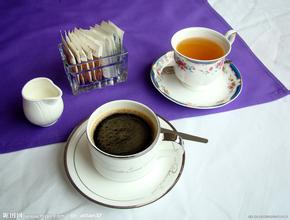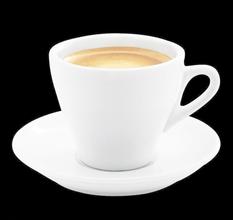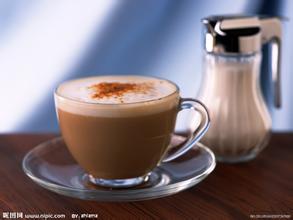Coffee knowledge | introduction to basic cup testing
Why do we need a cup test?
The significance of cup test is to evaluate and compare several different kinds of coffee at the same level. Because there are often very subtle differences between different coffees, and the characteristics of coffee (flavor, mellowness, freshness.) are easily affected by extraction methods (coffee utensils). Eliminating some of the causes of coffee, carefully prepared cup tests can taste the most basic inherent characteristics of coffee.
Scientific rigor, to a certain extent, guides us to carry out accurate cup testing. The measurement of water and coffee powder must be accurate, in order to prevent taste, the bean grinder must be thoroughly cleaned before grinding different coffee, and the injected hot water must be highly consistent.
Time is also a factor that requires special attention. Once the coffee powder is soaked, the brewing process begins, and a lot of changes will take place in the flavor of the coffee in the next 20 minutes. From the beginning to the end, a variety of factors will have a very important impact on coffee.
If you bake your own beans at home, or even buy all kinds of beans, plan to put them together. Cup testing allows you to learn how to evaluate and classify coffee, making you better at blending.
You don't need to be too rigorous to make a cup test at home-in fact, it means you don't need to follow some professional cup test rules and rituals. Generally speaking, you take a cup test because you love coffee, the adventurous feeling of trying and discovering something new, or you are just for fun.
Tools and coffee
When you are doing a cup test at home, you do not need to buy many expert tools, but special tools have a reason for their existence. For example, many professional cup testers like to use silver-plated spoons specially designed for cup testing, because the shape of the spoon can help "sipping" proceed as quickly as lightning (described later). And the silver plating on the spoon surface can absolutely minimize any potential factors that change the flavor of coffee (steel and other materials may bring other subtle flavors).
Maybe you only need to buy an accurate scale, or even a diaphragm, but fortunately, the online ordering price of an electronic scale is very low.
The tools you will need are based on our assumption that you are going to do the following four coffee tests:
8 porcelain cups or glasses of equal volume. In theory, the content of the cup is between 5 and 7 ounces.
A kettle or hot kettle. The minimum capacity of the kettle should be 64 ounces.
Bean grinder coarse scale grinder has an obvious advantage here, because it is very important for different coffees to maintain a consistent grinding fineness.
Water in a glass container containing 2 pints (pint unit of capacity, 2 pints = 1.136 liters). It is used to clean the cup spoon of the cup test process.
4 cup spoons. Again, although there are cup spoons specially designed for cup testing, ordinary spoons can also work well, or "deep bowl" spoons designed in European style. The more depressions in the spoon part, the better.
The exact pound scale. In order to accurately measure the weight of coffee, or a measuring spoon is fine.
Cup test form. Doing a cup test at home is not entirely necessary, but having a cup test form will be more perfect and more concise to help you evaluate your coffee. When you discuss coffee with your cup tester, the cup test table provides you with a way to bring back the discussion notes.
Four empty coffee mugs. The cup test process includes a lot of loud slurping, tongue-tutting, and even spitting. A professional cup tester has a spittoon-you have a coffee mug with a handle.
It is very important to be clear and focused.
Here are some options you might need:
Sample plates these plates are used to hold roasted samples of each kind of coffee beans, and the other plate is used to hold unbaked raw beans.
Extra spoons are used to skim off the coffee powder (don't worry, you'll understand it later in the narrative), and it would be better to do it with some extra spoons.
What about coffee? The next thing you need to decide is which coffee to evaluate? First of all, it's best to make 3-4 kinds of coffee at first, but you can also make more cups than that (you need to prepare more tools than above).
As for what kind of coffee to choose for the cup test, you need to consider. Sometimes, professional cup testers will choose four or more kinds of coffee from the same area to do cup tests in order to compare their differences-they want to find the best varieties from the same particular producing area. Therefore, they will simultaneously evaluate and compare 4, 8, 12, or more coffee samples. There are also times when cup testers compare several kinds of coffee (or famous coffee) that come from different regions but taste similar.

Important Notice :
前街咖啡 FrontStreet Coffee has moved to new addredd:
FrontStreet Coffee Address: 315,Donghua East Road,GuangZhou
Tel:020 38364473
- Prev

The life journey of coffee trees, from the planting of coffee trees to the harvest of coffee beans
(1) the seedling stage is the period from the germination of seeds (or cuttings or grafting) to the emergence of seedlings (the stage of raising seedlings in the nursery), about 0.5-1.5 years. After the coffee seeds were sown, the cotyledons began to be unearthed after a period of germination, which took about 30-100 days, and the length of time was closely related to temperature and humidity. Cotyledons must be removed after germination
- Next

Life Journey of Coffee Tree
Coffee, as a perennial evergreen shrub or small tree of Rubiaceae, is a horticultural perennial cash crop. The life of a coffee tree is generally divided into these stages: (1) the seedling stage is the period from the germination of seeds (or cuttings or grafting) to the emergence of seedlings (the stage of raising seedlings in the nursery), about 0.5-1.5 years. After the coffee seed is sown, after a period of time
Related
- Beginners will see the "Coffee pull flower" guide!
- What is the difference between ice blog purified milk and ordinary milk coffee?
- Why is the Philippines the largest producer of crops in Liberia?
- For coffee extraction, should the fine powder be retained?
- How does extracted espresso fill pressed powder? How much strength does it take to press the powder?
- How to make jasmine cold extract coffee? Is the jasmine + latte good?
- Will this little toy really make the coffee taste better? How does Lily Drip affect coffee extraction?
- Will the action of slapping the filter cup also affect coffee extraction?
- What's the difference between powder-to-water ratio and powder-to-liquid ratio?
- What is the Ethiopian local species? What does it have to do with Heirloom native species?

